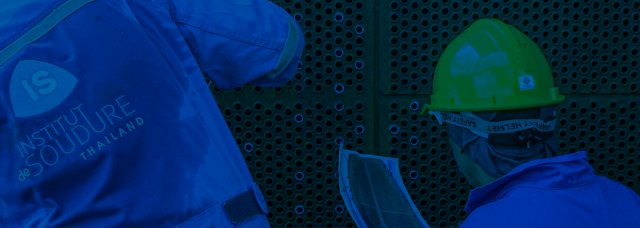Tensile
Tensile Testing of Metals is a destructive test process that provides information about behavior of the material. Mechanical properties can be derived from the Load / displacement or Stress / Strain curves:
- Yield Strength / Yield Point (YS)
- Ultimate Tensile Strength (UTS)
- Youngs Modulus for elasticity
- Modulus of Toughness - Brittleness
- Elongation and reduction in area – Ductility
Machine capacity– INSTRON 1000HDX
- Specifications Load capacity: 1000 kN (100 Tons)
- Software: Bluehill 3
- Maximum test speed: 100 mm/min (Several unit conversions in the operation program)
- Actuator stroke: 254 mm
- Cross head adjusting speed: 300 mm/min
- Horizontal opening: 741 mm
- Extensometer: Static Axial Clip – On with active gauge length 25mm.,50mm.,100mm.
Standard of Test
- ASTM A370
- ASTM E8
- EN 10002-1
- ISO 6892-1
- JIS Z 2241
Impact
Various type of notched-bar impact tests are used to determine the tendency of material to behave in a brittle manner. The impact test is performed at various temperatures to uncover any effects on impact energy. The charpy impact testing methods, including the charpy V-notch test and weld charpy test. The ASTM impact test methods are regularly performed. Testing can be accomplished at temperatures in the range of -196ºC to 25ºC with an impact energy up to 320 ft. lbs.
Machine capacity
- Types of Testing: charpy impact V notch
- Temperatures: -452ºF to 500ºF
- Impact Energy: up to 320 ft. lbs.
- Materials Tested: metals
Standard of Test
- ASTM A370
- ASTM E23
- ISO 148-1
- JIS Z 2242
Bending
A bend test measures the ductility of a material by bending it over a given radius. On completion of the test the coupon is examined for defects that may have opened up on the tension face.
Classification by bending samples
Face bend tests - made with the weld face in tension. Reveals defects on the face such as excessive undercut or lack of sidewall fusion close to the cap.
Root bend tests - made with the weld root in tension. Reveals lack of root fusion or penetration.
Side bend test – made with the weld cross section in tension. Reveals lack of side-wall fusion and lack of root fusion in double-V butt joints.
Standard of Test
- ASTM A370
- ASTM E190
- ASME Section IX
- API 1104
- ISO 5173
Hardness (Vickers/Rockwell/Brinell)
The hardness of a material usually is considered as the resistance to deformation and for metals the property is a measure of their resistance to permanent or plastic deformation.
There are a number of test methods:
Vickers Hardness Test
Vickers testing machines have a microscope or USB camera to visualize and measure the indentation caused on a test sample by a diamond indenter. The indenter is an upside-down pyramid shape with a square base and an angle of 136 degrees between opposite faces.
Machine capacity– Micro Vicker harness Tester Brand: Innova with load 0.2Hv to Hv20
TEST METHODS/SPECIFICATIONS
-
ASTM E92
-
ASTM E384
-
ASME Section IX
-
BS EN 1043-1
-
AWS C1.1
-
AWS C1.5
-
SAE J423
Rockwell Hardness Test
Rockwell hardness measurements are available.3 scale in testing include:
- scale A (HRA)
- Rockwell scale B(HRB)
- Rockwell scale C (HRC).
Machine capacity : Brand: Innova Capacity: Brand: Innova Capacity: HRA, HRB, HRC
Standard of Test
- ASTM E18
- ISO 6508-1
- JIS Z 2245
Brinell Hardness Test
Brinell (HB) tests material using a 1-, 2.5-, 5- or 10-mmdiameter hardened-steel or carbide ball that is subjected to a load/force ranging from 1-3,000 kgf.
Machine capacity: Brand: Innova Capacity: Brand: Innova Capacity: HRA, HRB, HRC
Standard of Test
- ASTM E10
Portable Testing
(Ultrasonic contact impedance)
Vickers-shaped diamond indenter fixed on a vibrating rod that presses on the test surface with a specific force and measures hardness by applying ultrasonic vibrations and analyzing its damping effect.
Machine capacity: Brand: Innova Capacity: Brand: Innova Capacity: HRA, HRB, HRC
Standard of Test
- ASTM A833
- ASTM A1038
- ASTM E 110
- ASTM E140


